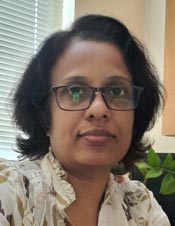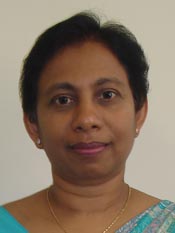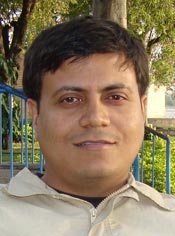Our commonality is gene-deep

A map showing the locations of the study samples and the distribution of language groups in Sri Lanka and India. (STU is for Sri Lankan Tamils)
We, both the Sinhalese and the Sri Lankan Tamils, are truly ‘unique’ and share a common genetic ancestry!
This common genetic ancestry has been revealed in a recent scientific study based on irrefutable evidence, busting many a myth and debunking numerous speculation.
“It goes beyond or supersedes the borders of different ethnicities, the different languages that the two groups speak and also their different cultural practices,” says scientist Dr. Ruwandi Ranasinghe of the Colombo University’s Institute of Biochemistry, Molecular Biology and Biotechnology (IBMBB).
Dr. Ranasinghe with the major support of former IBMBB Director Emeritus Prof. Kamani H. Tennekoon has been engaging in genetic studies to reconstruct the population history of the Sinhalese and the Sri Lankan Tamils. These studies are being conducted in collaboration with colleagues from India, Dr. Niraj Rai of the Birbal Sahni Institute of Palaeosciences, Lucknow and Prof. Gyaneshwer Chaubey of the Banaras Hindu University, Varanasi.

Dr. Ruwandi Ranasinghe at work in the lab
“The genetic links of both the Sinhalese and the Sri Lankan Tamils are West Eurasian rather than South Asian,” she says.
‘West Eurasian’ simply means that the ‘phylo-geographic’ variation of the Sinhalese and the Sri Lankan Tamils is of African-Arabian and thus Iranian origin. This differs from theories and beliefs that the Sinhalese and the Sri Lankan Tamils are of South Asian origin, even though the Sri Lankan Tamils have a “minor” southern Indian genetic component.
‘Phylo-geography’ is the study of the historical processes that may be responsible for the past-to-present geographic distributions of genealogical lineages, says Dr. Ranasinghe.

Dr. Ruwandi Ranasinghe
Another major revelation is that the Sinhalese have a stronger genetic link to north India and not south India. The studies have also found that the traces of common roots of the Sinhalese are more on the western side of the Indian subcontinent rather than the eastern side.
“These roots are with the Marathas and not so much with the Bengalis,” says Dr. Ranasinghe, going back in history to explain that the Marathas were a Marathi-speaking warrior group from the western Deccan Plateau, which is now Maharashtra.

Prof. Gyaneshwer Chaubey
The study participants were Sinhalese (nine in the age-group 18-60 years) from around Colombo and Sri Lankan Tamils of Jaffna origin (four in the age group 18-60 years) but living in Colombo. There were also participants from different ethnicities from some populations living in India.
Pointing out that the three-generation rule (having no mixed marriages going back three generations) was observed when collecting blood samples and no individuals were each other’s blood relatives, Dr. Ranasinghe says that although the sample size is low for intra-population and genomic selection type studies, they are sufficient for inter-population comparison and understanding of population history.

Emeritus Prof. Kamani H. Tennekoon
Having taken blood samples from the study participants, the scientists had used a commercially-available analysis chip to run the DNA (deoxyribonucleic acid) extracted from the blood samples. DNA is made up of chromosomes and genes (which determine the inherited physical traits of a person)
Chromosomes, spaghetti-like structures, come in matching sets of two (or pairs), with hundreds of genes on just one chromosome. A human cell nucleus contains 46 individual chromosomes or 23 pairs, half from the mother and the other half from the father.

Dr. Niraj Rai
Dipping into the technicalities of the study, she says that they are poring over microscopes to study the polymorphism array amounting to 500,000 of a single nucleotide variation in the human genome. This test – a single nucleotide polymorphism array (SNP) – looks at a genomic variant at a single base position in the DNA.
Getting back to language, Dr. Ranasinghe says that the Sinhalese speak the Indo-European language of the Indo-Iranian branch, which is said to originate in northwestern India, going back to at least the 5th century B.C. Previous genetic studies on low-resolution markers failed to infer the genomic history of the Sinhalese and as such they performed a high-resolution fine-grained genetic study.
These studies are ongoing to sequence the whole genome of the Sinhalese and the Sri Lankan Tamils, with the addition of the Veddahs as well.

A comparison of maternal ancestry components among populations in Sri Lanka and South India.
Searching for an ideal partner? Find your soul mate on Hitad.lk, Sri Lanka's favourite marriage proposals page. With Hitad.lk matrimonial advertisements you have access to thousands of ads from potential suitors who are looking for someone just like you.


